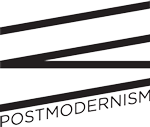”Socialist Architecture in Bucharest”
Producer: PostModernism Museum Bucharest, Romania
Co-producers: Domeniul Otetelisanu Foundation, Artoteca
Private collection: Daniel Balint
March 1 – April 10, 2016
Address: SWAN Technology Park, Kingston building, Șos. București Nord nr. 15-23, Pipera, Bucharest, Romania
Schedule:
March 21 – 27– private week, only by appointment
Wednesday, Friday – 12h-14h
All other days and hours: by appointment. We do private touring for interested groups. Please write to info at postmodernism.ro or call (+4) 0730 040 514)
www.facebook.com/PostModernismMuseum
Exhibition research
The extensive research exhibition ”Socialist Architecture in Bucharest”, co-produced by PostModernism Museum, Domeniul Otetelisanu Foundation and Artoteca, is based on the never before seen or exhibited all together original documents, drawings, photos, plans from the Horia Maicu Archive, now private collection Daniel Balint.
Horia Maicu (Harry Goldstein until 1947) is a renowned architect, chief architect of Bucharest in the interval 1958-1969, who left his signature on a number of social realism iconic buildings in Bucharest, now still standing and used, like The National Theatre, Casa Scanteii (now the Free Press House) or Sala Palatului.
First time seen, very detailed hand-drawn plans are displayed within the show. Further on, photos and sketches on work journeys of Maicu in Italy and France and series of documenting photos of the enormous building-in-progress sites are revealed in a dynamic panorama in PostModernism Museum’s space. The exhibitional flow continues with the presentation of 6 exceptional video interviews made in 2015 with Romanian (now senior) architects, living and working during the communist Bucharest: arh. Romeo Balea, arh. Alexandru Budisteanu, Mihail Caffe, arh. Emanoil Mihailescu, arh. Sorin Vasilescu and arh. Vintila Savulescu.
The Horia Maicu Archive was discovered by Daniel Balint in 2014 and it was researched upon by Domeniul Otetelișanu Foundation and Artoteca in 2015. In 2016 PostModernism Museum Bucharest makes a research exhibition on the Romanian socialist architecture in its capital, having as study case outstanding selections of Horia Maicu Archive and further produced materials.
Historical context
After the ending of the Second World War, Romania became a Stalinist totalitarian state. Under the Soviet influence, the country dramatically changed. The political regime was concentrated into a single, unique leading party: the Romanian Communist Party.
Building the new man, the new way of being, the new power were the new major issues of the Soviet regime of Gheorghe Gheorghiu Dej (1947-1965). Architecture was one of the principal sectors in charge of these big important changes and the architects had started to build new faces for the cities. As the capital of Romania, known as ”Little Paris” within the interwar period, Bucharest was a vital pawn to promote and enhance of the newly installed power and its new institutions.
Systematization in Romania was a program of urban planning carried out under Nicolae Ceausescu’s communist regime (1965-1989). Ceausescu was impressed by ideological mobilization of Kim Il-Sung in North Korea during his Asia visit in 1971, and began the campaign shortly afterwards. (PostModernism Museum covered arts and culture around 1971 within the research, archive and exhibition project ”Before & After the Cultural Revolution in Romania: 1971”).
One of the most important architects of this period Horia Maicu (1905-1975), chief architect of Bucharest (1958-1969), was in charge of building some of the most iconic powerful institutions buildings in the city: The National Theatre, Casa Scanteii (now Casa Presei Libere / the Free Press House), Sala Palatului, alongside urbanization plans and large important neighbourhoods: 1 Mai, Mihai Bravu, Balta Alba, Colentina, Drumul Taberei among others.
///
The interviews in the exhibition ”Socialist Architecture in Bucharest” are produced in 2015 within the project ”Bucharest. Block. Fortress” organized by Domeniul Otetelișanu and Artoteca.
Team leader: Claudia Zidaru
Artistic director: Andrei Draghici
Film director: Cristian Cocos
Audio-video editor: Liviu Baesanu
Music: Basic 08 – I am wearing my dancing pants
The exhibition research project ”Socialist Architecture in Bucharest” is part of DARE – programme of Documenting, Archiving, Revaluing and Exhibiting the art produced in Romania in 1945-1990, launched by PostModernism Museum.
In 2015 PostModernism Museum has initiated a 5-year programme of Documenting, Archiving, Revaluing and Exhibiting the art produced in Romania in 1945-1990, named DARE. The programme consists of a series of researches analyzing the relationship of Romanian artists to different political ideologies and social climates within the historic periods post-war and communist, 1946-1989. So far, no private or public institution in Romania has assumed an initiative of research recovery for this historic period of time.
PostModernism Museum (PMM) is a private initiative of a group of curators and cultural managers and is based in Bucharest, Romania. PMM is member of Global Network of Private Museums – the first and only of the kind.
www.postmodernism.ro
www.facebook.com/PostModernismMuseum

Casa Scînteii București 
Sa construim Casa Scinteii 23 august 1950 
Sa construim Casa Scinteii 2 decembrie 1951 
Casa Scânteii 1950-51 Arhitecți H. Maicu, N.Badescu, M. Locar, M. Alifanti 
Inaugurare bancnota 100 lei

Sala Palatului 
Sala Palatului, acvatinta de Anatolie Cudinoff






















